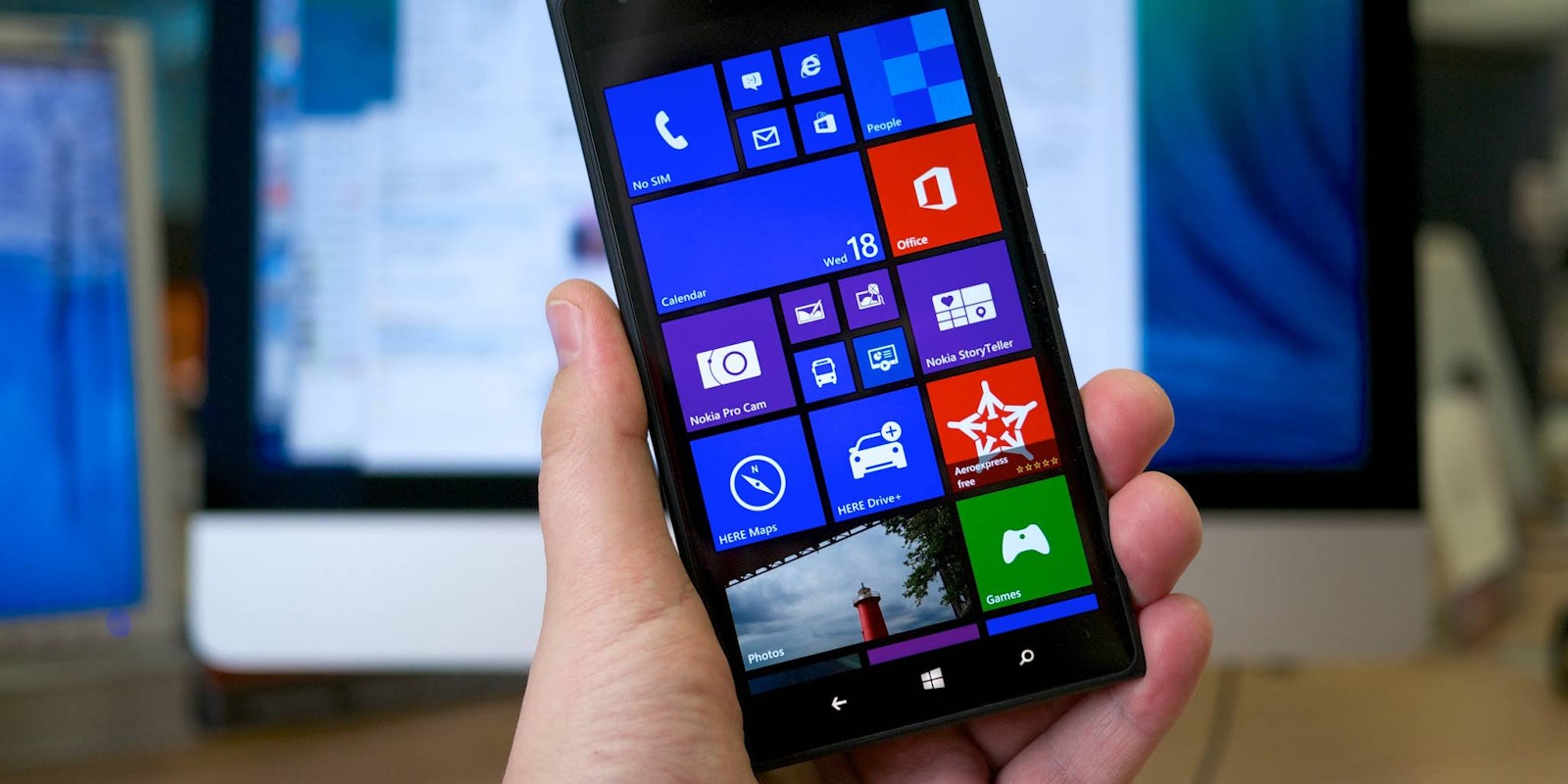It’s been a tough year for Windows Phone.
Microsoft announced today that it will be writing off the $7.6 billion purchase of Nokia and laying off 7,800 employees, mainly from its phone division. It’s all in an effort to restructure and refocus its mobile strategy moving forward.
Remember when Microsoft acquired Nokia back in 2013? Since Nokia had opted to become an exclusive Windows Phone manufacturer, it seemed like the perfect way for Microsoft to marry its software and hardware business. Unfortunately, the honeymoon ended. As Satya Nadella took over as CEO, he had a very different vision for the company—one that put a larger emphasis on software and the cloud.
What ended up happening was that Microsoft put Lumia on the back burner while it worked on other technologies, like Surface, Band, and HoloLens. This was all the while it was feeding its mobile software into iOS and Android for the first time.
In the past 12 months, Microsoft had acquired Wunderlist, Sunrise, and Accompli. The company has even developed new, original productivity apps with the introduction of Tossup. Meanwhile, minus Wunderlist, these Microsoft apps aren’t even available yet on Windows Phones. Strangely, iOS and Android users even have access to a free, redesigned, mobile-friendly version of Word, Powerpoint, and Excel, all of which were released last year while Windows Phone users never received this update. It’s even looking like Cortana, Microsoft’s virtual assistant, will be moving over to iOS and Android.
The thing that’s been most frustrating to Microsoft fans has been the lack of a flagship device. Arguably, the last time fans got a high end device was the Lumia 930, released back in July of 2014.
Even though it’s looking rather gloomy and doomy for Microsoft, the company might not be exiting the phone business just yet. According to Bloomberg, Nadella wants to streamline things, and focus on three categories. Other than business users, the other two segments of the market weren’t explicitly stated. But sources at Bloomberg suggest that the other two segments will be the affordable and high-end flagship markets. Nadella reportedly wants an “effective and focused phone portfolio,” which looks like it could mean six new devices per year.
It must be noted that Microsoft has addressed some of the above software gaps and complaints by pointing to Windows 10. The company has said that it’s putting the focus on Windows 10 for mobile and will bring its phones up to snuff with its release later this year.
So, what does all of this mean for Windows Phone moving forward? First off, the Nokia purchase was an apparent failure. It was expensive, failed to pay off, and cost thousands of people their jobs during Microsoft’s rebalancing act. Secondly, it’s the stark reality that making hardware is a very expensive endeavor. Minus Apple, which has a userbase willing to pay for its expensive devices, all Android phone manufacturers are gliding by on minimal profits. Lastly, there is hope for Windows Phone with Windows 10 for Mobile. If Microsoft can truly pull off an operating system that’s the same across computers, tablets, and phones, then it will effectively pull off a feat that’s made Apple’s platforms so successful and likely boosted the popularity of Google’s Chromebook hardware. Nadella’s decision to restructure and refocus should help right the wrongs lingering from the Steve Ballmer era, but given how things have been going, Microsoft could have already lost the chance to get it right.
Either way, we will see if Nadella and Microsoft can pull it off with Windows 10, coming out late this month for computers and later this year for mobile devices.
Photo via Karlis Drambans/Flickr (CC by 2.0)
